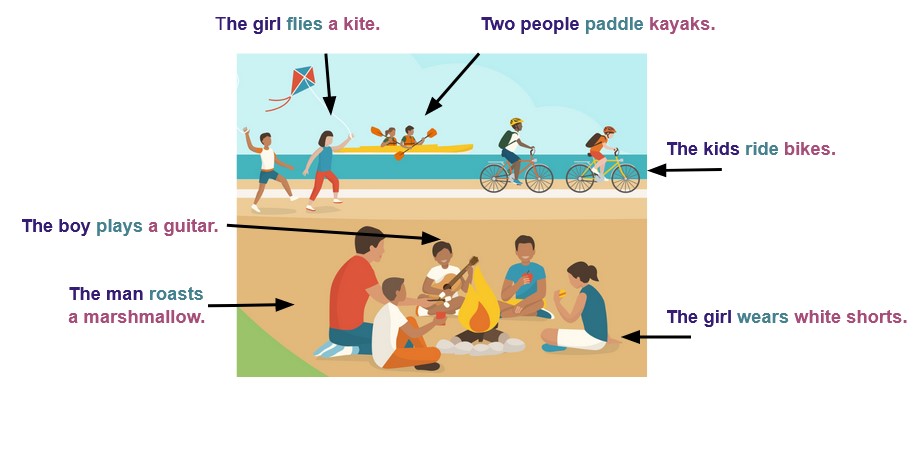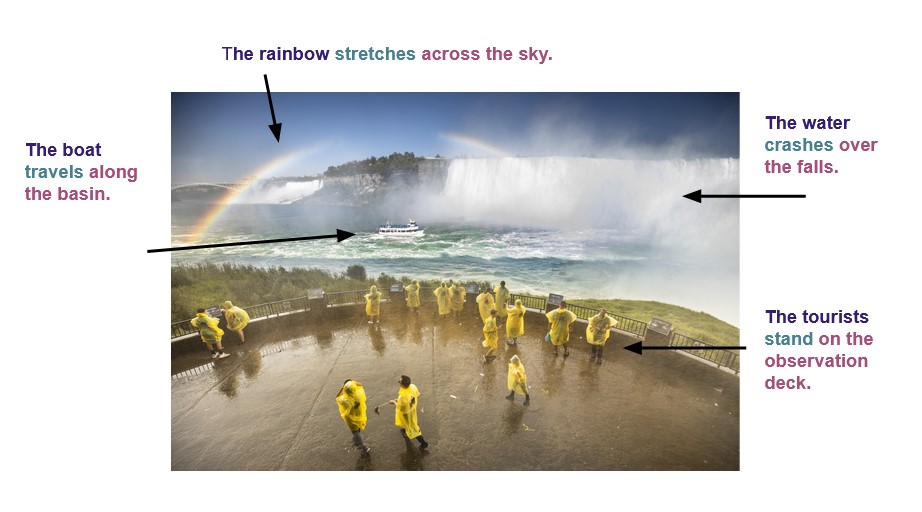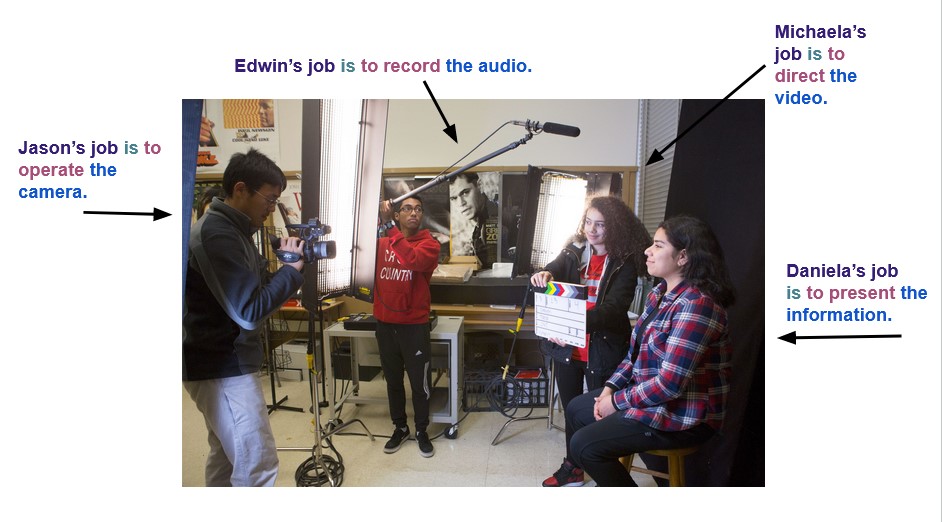Picture Word Inductive Model

The Picture Word Inductive Model (PWIM) is a strategy to teach students sentence structure and content simultaneously. This strategy is part of Colorin Colorado's ELL Strategy Library and can be used to support academic language development for all students.
Strategy Overview
How This Strategy Supports Language Development
Emerging level students benefit from explicit use of visuals to support their comprehension and language acquisition around a specific topic. The PWIM explicitly and systematically teaches essential nouns, verbs, details, grammatical structures, and vocabulary words associated with a topic using a single visual. The strategy can be used in any content area to support emerging level students as they develop academic language and content.
Step-by-Step Instructions
- Choose a highly detailed image that teaches a concept.
- Share the picture with the class on a large screen.
- Write the name of the noun on the image in one color and draw a line from annotation to that particular noun.
- Then write the verb for this noun in another color.
- Complete the sentence with the details of that noun in a different color.
- Repeat this process for the rest of the nouns in the image.
- Ask students to tell their partner about the picture using the annotated image.
- Ask students to write about the picture using the annotated visual.
Lessons Learned
- Limit the number of sentences per image to only the most essential as this process can take a long time.
- Provide students with their own image so they can also write the sentences as the teacher models.
- Ask students to contribute ideas for vocabulary and sentences during the annotation process.
- Have students orally practice the sentences with a partner throughout the process.
- Use pictures for review regularly.
- As students gain more vocabulary and sentence structures, have them contribute more ideas for each sentence and eventually create their own PWIM.
- Pair this process with a Sentence Pattern Chart.
Differentiation
This process is designed for entering and emerging level students. Additional differentiation ideas include the following:
- Write words and sentences in the students’ heritage language in addition to English.
- Encourage students who are literate in their heritage language to write words and sentences in their heritage languages.
You can also add a Sentence Pattern Chart at the bottom of the picture to make the patterns written in the colored-coded sentences more explicit.
Co-Teaching Considerations
Content or Grade-Level Teacher
- Choose the detailed image that captures key concepts for the grade-level lesson.
- Share key vocabulary with the ELD teacher.
- If the concept is a process, number the annotations so students see the sequence in the process.
English Language Development Teacher
- Use PWIM with small groups of beginning level students before the content lesson to build background knowledge and vocabulary.
- Encourage beginning level students to use their PWIM pictures during the grade-level class as a support.
- Add heritage language words to the PWIM.
- For students at the Developing phase of proficiency, provide the image and have students work together to add the sentences.
- For the students on the Expanding phase of proficiency, have them write the annotations for the image. Then write a one-paragraph summary that includes transitions (provided in a word bank).
Examples
| Topic | Sample PWIM images |
|---|---|
| At the Beach |  |
| Visiting Niagara Falls |  |
| Video Production |
Image credit: Photo by Allison Shelley/The Verbatim Agency for EDUimages |
| Math Class: Geometric Shapes |  |
Resources
- Using PWIM to Support SIFEs (Tan Huynh)
- Video: Using Visuals and PWIM to Advance Literacy (Valentina Gonzalez)
References
Shaman, S. (2014). "Using the Picture Word Inductive Model (PWIM) to Teach English Vocabulary." ORTESOL Journal, volume 31. Retrieved from: https://ortesol.wildapricot.org/resources/Documents/Publications/Journals/2014/Using%20the%20Picture%20Word%20Inductive%20Model%20(PWIM)%20to%20Teach%20English%20Vocabulary%20(49).pdf



